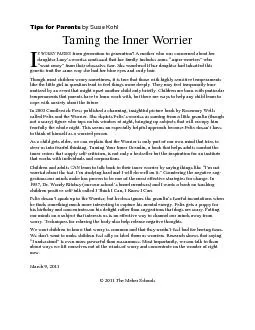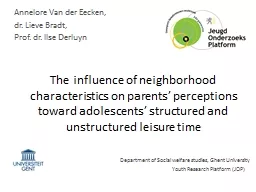PDF-Tips for Parents
Author : calandra-battersby | Published Date : 2015-12-09
by Susie Kohl Taming the Inner Worrier S WORRY PASSED from generation to generation A mother who was concerned about her daughter Lucyx2019s worries confessed that
Presentation Embed Code
Download Presentation
Download Presentation The PPT/PDF document "Tips for Parents" is the property of its rightful owner. Permission is granted to download and print the materials on this website for personal, non-commercial use only, and to display it on your personal computer provided you do not modify the materials and that you retain all copyright notices contained in the materials. By downloading content from our website, you accept the terms of this agreement.
Tips for Parents: Transcript
Download Rules Of Document
"Tips for Parents"The content belongs to its owner. You may download and print it for personal use, without modification, and keep all copyright notices. By downloading, you agree to these terms.
Related Documents














